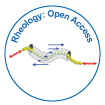Current Status of Cattle Production System in Nyagatare District-Rwanda
Received Date: Apr 05, 2017 / Accepted Date: Jun 26, 2017 / Published Date: Jul 03, 2017
Abstract
A study was conducted to characterize the cattle production systems in Nyagatare District, Eastern Province of Rwanda using pre-tested questionnaires, interviews with key informants as well as focus group discussions in a period of two months. The respondents were selected by multi-stage sampling at Sector and Cell1 levels.
Based on the procedure to determine the overall sample size, the result indicated that the majority (98.3%) of farms were privately owned by big families of five to seven members and most farmers (53.9%) had only primary education. Most respondents (52.6%) were in the age range of 41-50 years and were mainly (48.3%) located within three km from trading centres. The farm size averaged 6.5 ± 0.8 ha and most farms (64.7%) were fenced except in Rukomo Sector (50%) where zero grazing prevailed.
Natural pastures (savanna grass land) were the main feed resource, tethering (9%) and communal grazing had diminished. Vita-mineral and salt blocks supplements, hay and crop residues were the predominant supplementary feed stuffs used except in Karangazi and Rwemiyaga Sectors where only vita-mineral block predominated. However maize and rice brans were reported to be the main feed stuffs used in supplementary feeding of lactating cows. Most farmers (89.7%) reported shortage of water as most of the farmers trekked their cattle to the nearest valley dams (59.2%), rivers (21.1%) and a few 6% had water on farms.
Indigenous cattle were predominant (67.03%) followed by cross-breeds (28.37%) and exotics (4.6%) while all farmers kept small ruminants. Natural breeding predominated (74.9%) and most farms (60.6%) had animal houses most of which were (52.8%) temporary. The reported mean age at first calving (AFC) was highest (40.2 ± 0.33) for Ankole and the lowest (29.1 ± 0.50) months for exotic cattle. Calving interval were lower in local breeds than 65.7 ± 3.0 in exotic. The mean dairy milk yield was lowest for Ankole cattle 2.4 ± 0.08 as compared to the exotics (10.42 ± 0.36) and their crosses (7.2 ± 0.34). The main challenges were diseases, shortage of water and feeds and inadequate extension services same results was reported.
1Sectors and Cells are the third and fourth level administrative subdivision respectively in Rwanda.
Keywords: Cattle rearing; Feeding; Breeding; Diseases, Records; Production; Rwanda
Citation: Eugene M, Francis M, Tukei M, Eugene GN, James OA (2017) Current Status of Cattle Production System in Nyagatare District-Rwanda. Rheol: open access 1: 108.
Copyright: © 2017 Eugene M, et al. This is an open-access article distributed under the terms of the Creative Commons Attribution License, which permits unrestricted use, distribution, and reproduction in any medium, provided the original author and source are credited.
Share This Article
黑料网 Journals
Article Usage
- Total views: 7660
- [From(publication date): 0-2017 - Mar 11, 2025]
- Breakdown by view type
- HTML page views: 6723
- PDF downloads: 937
